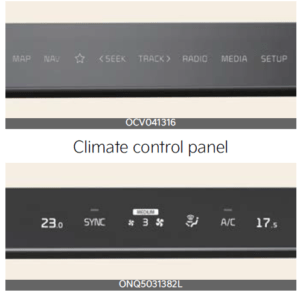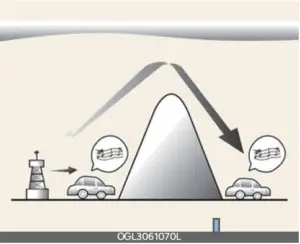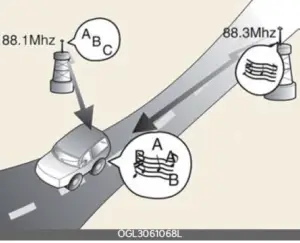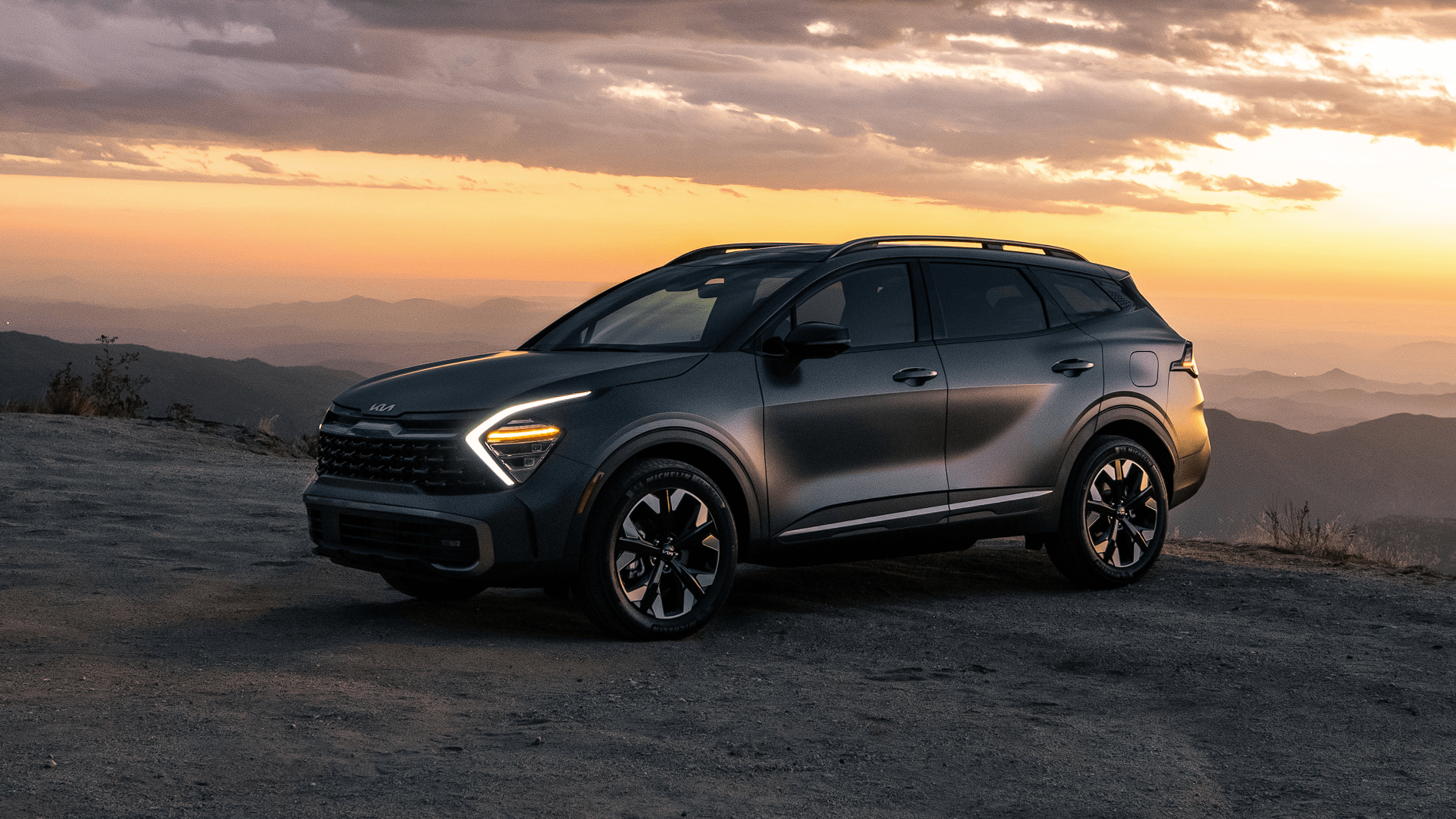Kia Sportage PHEV 2023 Exterior Features, Infotainment System and Declaration of Conformity
The 2023 Kia Sportage PHEV is the epitome of car innovation. It combines cutting-edge technology and high-end interior design to completely change the way you drive. The innovative Front Glass Heater is at the front of the pack. This feature is meant to easily fight frost and ice, making sure that you can see clearly even on the coldest mornings. In addition to being able to handle the weather, the Sportage PHEV has a lot of great features inside that mix comfort with style. Inside the carefully designed cabin, expensive sound systems, lighting that can be changed, and seats that can be adjusted create an oasis of comfort and luxury. With high-tech entertainment systems, easy-to-use navigation tools, and seamless connections, every trip is a trip of luxury and technology. The Front Glass Heater’s cutting-edge features and the luxurious interior features of the 2023 Kia Sportage PHEV work together to create a new standard for automotive greatness. Every road ahead will be warm and stylish.
Exterior Features
Roof rack (if equipped)
If the vehicle has a roof rack, you can load cargo on top of your vehicle.
The actual shape may differ from the illustration.
Crossbars and fixing components needed to install the roof rack on your vehicle may be obtained from an authorized Kia dealer or other qualified shop.
NOTICE
- The crossbars (if equipped) should be placed in the proper load-carrying positions prior to placing items onto the roof rack.
- If the vehicle is equipped with a sunroof, be sure not to position cargo onto the roof rack in such a way that it could interfere with sunroof operation.
- When the roof rack is not being used to carry cargo, the crossbars may need to be repositioned if wind noise is detected.
CAUTION
- When carrying cargo on the roof rack, take the necessary precautions to make sure the cargo does not damage the roof of the vehicle.
- When carrying large objects on the roof rack, make sure they do not exceed the overall roof length or width.
- When you are carrying cargo on the roof rack, do not operate the sunroof. (if equipped)
WARNING
- The following specification is the maximum weight that can be loaded onto the roof rack. Distribute the load as evenly as possible across the cross-bars (if equipped) and roof rack and secure the load firmly.
ROOF RACK 220 lbs. (100 kg) EVENLY DISTRIBUTED
Loading cargo or luggage in excess of the specified weight limit on the roof rack may damage your vehicle.
- The vehicle’s center of gravity will be higher when items are loaded onto the roof rack. Avoid sudden starts, braking, sharp turns, abrupt maneuvers or high speeds that may result in loss of vehicle control or rollover resulting in an accident.
- Always drive slowly and turn corners carefully when carrying items on the roof rack. Severe wind updrafts, caused by passing vehicles or natural causes, can cause sudden upward pressure on items loaded on the roof rack. This is especially true when carrying large, flat items such as wood panels or mattresses. This could cause the items to fall off the roof rack and cause damage to your vehicle or others around you.
- To prevent damage or loss of cargo, FREQUENTLY check to ensure the cargo is securely fastened to the roof rack.
Infotainment system
NOTICE
If you install an aftermarket HID head lamp, your vehicle’s audio and electronic devices may malfunction.
Using the infotainment/climate switchable controller

Press the button on the switchable controller to switch between infotainment system or climate control panel.
Press and hold the button to select the default mode for the control panel.
Switching between panels
Infotainment control panel

Press the button on the switchable controller to select the desired control panel.
The selected control panel icon will appear and the control panel will be changed.
- The knob display will appear according to the selected control panel mode.
- When the vehicle is in the ACC position, only the infotainment system will be activated.
Setting the default mode

Press and hold the button to select the default mode for the control panel.
- After the setting, the control panel will return to the default mode after a certain period of time even if the control panel is switched to a different mode.
- If the mode is set to ‘OFF’, the control panel will display the mode used recently.
Audio system
NOTICE
If you install an aftermarket HID head-lamp, your vehicle’s audio and electronic device may malfunction.
If your vehicle is equipped with the infotainment system, refer to a separately supplied manual for detailed information.
Sharkfin antenna

The sharkfin antenna transmits and receives wireless signals such as AM/FM, Sirius XM, GNSS, etc.
The signals which the antenna can transmit and receive vary by the vehicle option.
NOTICE
Avoid adding metallic coatings such as Ni, Cd, etc. These can degrade the receiving AM and FM broadcast signals.
USB port
You can use the USB port to plug in a USB.

CAUTION
Depending on the size, length, or shape of the USB stick, if you forcibly close the tray cover, the USB device may be dam-aged, deformed or the cover may not reopen as the device is stuck.
When the stick is stuck, forcibly opening the cover can also cause damage to the device.
If the USB stick does not fit into the space, do not close the cover and try another USB stick with different specifications.
How vehicle radio works FM reception

AM and FM radio signals are broadcast from transmitter towers located around your city. They are intercepted by the radio antenna on your vehicle. This sig-nal is then processed by the radio and sent to your vehicle speakers.
However, in some cases the signal coming to your vehicle may not be strong and clear.
This can be due to factors, such as the distance from the radio station, closeness of other strong radio stations or the presence of buildings, bridges or other large obstructions in the area.
AM reception

AM broadcasts can be received at greater distances than FM broadcasts. This is because AM radio waves are transmitted at low frequencies. These long distance, low frequency radio waves can follow the curvature of the earth rather than traveling straight. In addition, they curve around obstructions resulting in better signal coverage.
FM radio station

FM broadcasts are transmitted at high frequencies and do not bend to follow the earth’s surface. Because of this, FM broadcasts generally begin to fade within short distances from the station. Also, FM signals are easily affected by buildings, mountains, and obstructions.
This can lead to undesirable or unpleasant listening conditions which might lead you to believe a problem exists with your radio.
The following conditions are normal and do not indicate radio trouble:
- Fading – As your vehicle moves away from the radio station, the signal will weaken and sound will begin to fade. When this occurs, we suggest that you select another station with a stronger signal.

- Flutter/Static – Weak FM signals or large obstructions between the transmitter and your radio can disturb the signal causing static or fluttering noises to occur. Reducing the treble level may lessen this effect until the disturbance clears.
- Station Swapping – As an FM signal weakens, another more powerful signal near the same frequency may begin to play. This is because your radio is designed to lock onto the clearest signal. If this occurs, select another station with a stronger signal.

- Multi-Path Cancellation – Radio signals being received from several directions can cause distortion or fluttering. This can be caused by a direct and reflected signal from the same station, or by signals from two stations with close frequencies. If this occurs, select another station until the condition has passed.
Using a cellular phone or a two-way radio
When a cellular phone is used inside the vehicle, noise may be produced from the audio system. This does not mean that something is wrong with the audio equipment. In such a case, try to operate mobile devices as far from the audio equipment as possible.
When using a communication system such as a cellular phone or a radio set inside the vehicle, a separate external antenna must be fitted. When a cellular phone or a radio set is used with only the internal antenna, it may interfere with the vehicle’s electrical system and adversely affect the safe operation of the vehicle.
WARNING
Cell phone use
Do not use a cellular phone while driving. Stop at a safe location to use a cellular phone.
WARNING
Distracted driving
Driving while distracted can result in a loss of vehicle control that may lead to an accident, severe bodily injury, or death. The driver’s primary responsibility is in the safe and legal operation of a vehicle. Any use of handheld devices, other equipment, or vehicle systems that take the driver’s eyes, attention, and focus away from the safe operation of a vehicle are not permissible by law. These should never be used during the operation of the vehicle.
Declaration of Conformity
FCC
This equipment has been tested and found to comply with the limits for a Class B digital device, pursuant to part 15 of the FCC Rules. These limits are designed to provide reasonable protec-tion against harmful interference in a residential installation.
This equipment generates, uses and can radiate radio frequency energy and, if not installed and used in accordance with the instructions, may cause harmful interference to radio communications. However, there is no guarantee that interference will not occur in a particular installation. If this equipment does cause harmful interference to radio or television reception, which can be determined by turning the equipment off and on, the user is encouraged to try to correct the interference by one or more of the following measures:
- Reorient or relocate the receiving antenna.
- Increase the separation between the equipment and the receiver.
- Connect the equipment into an outlet on a circuit different from that to which the receiver is connected.
- Consult the dealer or an experienced radio/TV technician for help.
CAUTION
Any changes or modifications to this device that is not explicitly approved by the manufacturer could void your authority to operate this equipment.
This device complies with part 15 of the FCC Rules. Operation is subject to the following two conditions:
- This device may not cause harmful interference.
- This device must accept any interference received, including interference that may cause undesired operation.
This equipment complies with FCC radiation exposure limits set forth for an uncontrolled environment.
This equipment should be installed and operated with a minimum 8 in (20 cm) between the radiator and your body. This transmitter must not be collocated or operating in conjunction with any other antenna or transmitter unless authorized to do so by the FCC.
KIA SPORTAGE TOP BEST ITEMS
[amalinkspro_table id=”31533″ new-window=”on” nofollow=”on” addtocart=”on” /]
Reference Links
View Full User Guide: Kia Sportage PHEV 2023 User Guide
Download Manuals: https://owners.kia.com/content/owners/en/manuals.html


